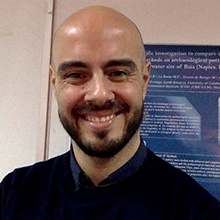Green Conservation and Cultural Heritage: State of Art and Perspectives
A special issue of Sustainability (ISSN 2071-1050). This special issue belongs to the section "Tourism, Culture, and Heritage".
Deadline for manuscript submissions: closed (31 October 2023) | Viewed by 10706
Special Issue Editors
Interests: cultural heritage; the characterization of stone building materials and their decay, the experimentation of innovative protective products, the archeometria study of chronologically different ceramic remains in subaerial and underwater environments
Special Issues, Collections and Topics in MDPI journals
2. Sapienza, University of Rome, Rome, Italy
Interests: green chemistry; chemistry applied to the cultural heritage; environmental chemistry and monitoring; molecular spectroscopy (Raman and FTIR)
Special Issues, Collections and Topics in MDPI journals
Special Issue Information
Dear Colleagues,
In the last decade, in the field of cultural heritage, interest has increased concerning the development of innovative products and protocols focused on the criterion of sustainability. In particular, one of the main challenges has been developing innovative products for conservation and restoration that respect both the environment and, at the same time, the operator. Green conservation is now emerging in the field of cultural heritage conservation as a result. Green conservation aims to improve the understanding of the concept of green, the development and implementation of eco-sustainable materials and methods, health and safety, environmental protection, technologies applied to cultural heritage in museums, cultural sites, restoration activities, and in general cultural heritage sustainability. In this context, a multidisciplinary approach represents the best way to share knowledge and define new strategies and opportunities to improve the conservation of cultural heritage and to protect operators and the environment.
We would like to invite you to submit your work to this Special Issue, entitled "Green Conservation of Cultural Heritage: state of the art and perspectives”, to understand the best solutions, products and protocols, and to find the most suitable treatment to avoid the degradation of materials employed in cultural heritage, and at the same time to safeguard the environment and operators in this field. This last issue is particularly relevant, because green conservation represents a new frontier to protect, restore, and preserve cultural heritage, in line with the objectives of Agenda 20230. Only in recent years has it become possible to find commercial green formulates used to address biological degradation problems, but their interactions with the original materials and their effective antimicrobic properties over time have not often been investigated over time and in situ. At the moment, much research is being carried out in the laboratory on new green products and protocols applied to different materials (stone, mortars, metals, paper, etc.), but the goal is to transfer the results of this research to the specific field of restoration, and consequently to the market.
The aim of this Special Issue is to present the latest developments in the field through a combination of research papers, communications, and review articles from leading groups around the world that focus on green conservation. Case studies are also welcome; these should report on the monitoring of surface treatments in cultural heritage that have a prominent role in conservation, constituting valuable knowledge in the case of future interventions.
The Special Issue will serve as a forum for papers on the following topics:
- Green and sustainable building practices for museums and architectural cultural heritage;
- Sustainable exhibition design;
- Experiences to transform ‘environmentally sustainable’ practices into ‘common’ practices;
- National and international sustainable projects on cultural heritage and landscape;
- Sustainable, ecological, and rational solutions between the cultural heritage and landscape and the local context;
- Best practices for a sustainable tourism;
- Biotechnology applications to conservation and the development of bio-based products;
- Green chemistry and nanotechnology for eco-friendly conservation;
- Feasibility of the application of innovative green methods, products, and strategies.
Prof. Dr. Mauro Francesco La Russa
Dr. Andrea Macchia
Guest Editors
Manuscript Submission Information
Manuscripts should be submitted online at www.mdpi.com by registering and logging in to this website. Once you are registered, click here to go to the submission form. Manuscripts can be submitted until the deadline. All submissions that pass pre-check are peer-reviewed. Accepted papers will be published continuously in the journal (as soon as accepted) and will be listed together on the special issue website. Research articles, review articles as well as short communications are invited. For planned papers, a title and short abstract (about 100 words) can be sent to the Editorial Office for announcement on this website.
Submitted manuscripts should not have been published previously, nor be under consideration for publication elsewhere (except conference proceedings papers). All manuscripts are thoroughly refereed through a single-blind peer-review process. A guide for authors and other relevant information for submission of manuscripts is available on the Instructions for Authors page. Sustainability is an international peer-reviewed open access semimonthly journal published by MDPI.
Please visit the Instructions for Authors page before submitting a manuscript. The Article Processing Charge (APC) for publication in this open access journal is 2400 CHF (Swiss Francs). Submitted papers should be well formatted and use good English. Authors may use MDPI's English editing service prior to publication or during author revisions.
Keywords
- cultural heritage
- green conservation
- natural products
- new products






